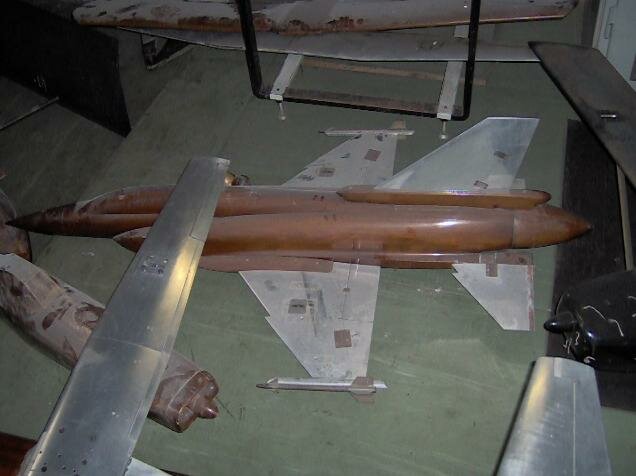Hi guys,
Thanks for the feedback!
Yes, I was thinking of letting the gentleman know at the end that I eventually completed the translation and send him a link to it. I shall pass your invitation to him

But, please, feel also free to drop him a line yourselves. Who knows!? More requests may result in a positive reply

Now, two remarks of my own after having gone through this next part also (I am reading this material for the first time, as I go along trying to translate it): details are quite sketchy and indeed much more questions come up following certain statements; there is indeed one
Mihai Neamtu listed as one of the wind tunnel specialists involved in the project - perhaps that is our blogger!?
IAR-95 (2), Saturday, January 8, 2011
http://la-neamtu-tiganu.blogspot.ro/2011/01/iar-95-2.html
Based on wind tunnel testing, it was expected that the new aircraft would display a similar degree of maneuverability as some western fighters (Mirage 2000, F-16, F-20).
In June 1985 the Institute received a visit by Romanian president Nicolae Ceausescu himself and immediately afterwards it was decided it was decided that the prototype would be built at I. Av. Craiova (Craiova Aircraft Building Factory, later AVIOANE Craiova), with support from I. Av. Bacau (today AEROSTAR Bacau), I. Av. Bucuresti (today ROMAERO Bucharest), IAR Brasov (Romanian Aeronautic Industries at Brasov) and AEROFINA in Bucharest.
Despite this, only a short while later, on August 1, 1985 the “supersonic” project was suspended, also by the president’s decision – pressure from within the Warsaw Pact was apparently being made in that direction.
Around this time a couple of civil aviation project were launched, namely the AG-6 crop dusting plane and the IAR-705 medium range airliner. The AG-6 made it to the point where it was actually constructed and flown, the idea behind this program being to replace the fleet of ageing AN-2s serving around the country in support of agriculture.
As a final note I can say that the IAR-95 project was a remarkable endeavor, displaying a highly scientific and technical level, involving many researchers and designers from within INCAS, all of which brought to bear their experience gained from previously tackled aviation projects.
Here is a list of engineers/ specialists involved in the “supersonic” project:
Aerodynamics –
Ioan Sabin Constantin, Spataru Patru, Gherega Emil, Nebancea Stefan, Bogos Stefan, Taposu Iosif, Achim Iuliana
Wind tunnels –
Neamtu Mihai, Tomescu Serban, Munteanu Florin, Savu George,Trifu Octavian, Dumitrescu Lucian, Oprean Corneliu, Ivanovici Anton, Demetrescu Teodor
Flight dynamics –
HackerTiberiu, Oprisiu Cornel, Ionita Achim, Radnef Sorin, Bochis Vladimir, Peia Ioan
Flight performance –
Marinescu Alexe, Cardos Vladimir, Istratie Vasile, Dumitrescu Dan, Simionescu Lucia
Static/ Fatigue calculations –
Stere Marcel , Adam Ion , Sacagiu Dragomir , Sandulescu Nicolae , Petre Mihaela , Martin Olga, Gheorghiu Viorica, Lozici Dorin, Mihailescu Doru ,Baran Daniela Moldoveanu Maria, Ulmanu Ionut, Maxineanu Ion, Berar Cristian , Radu Gheorghe
Airframe –
Cucuianu Petru, Copaescu Alexandru, Calomfirescu Mihai, Novac Gheorghe, Condratov Dan, Tataru Simion, Dragoman Cornel, Dragoman Elena, Safciu Gheorghe, Mihailescu Paul, Benea Dorel
Flight controls –
Ivanciu Mihai, Brebene Constantin, Mircea Stefan Nicolae, OprisiuDoina, Ghemaru Magdalena, Teodorescu Stefan, Copaescu Paula, Ababei Dan, Nila Ion
Air conditioning system –
Abrudan Traian, Pricop Mihai, Ionescu Mariana, Enache Nicolae, Paraschivescu Maria, Sasu Ion, Ionescu Ion
Fuel system –
Podar Viorel, Boicu Neculai, Stan Virgil, Neagu Mihai
Hydraulics –
Bencze Carol, Vasile Andrei, Teodorescu Marioara, Ilinoiu Viorica, Iacob Stelian, Balteanu Ion, Gherghe Valerica, Teodorescu Catalin, Tivig Constanta
Landing gear –
Nastase Marin, Cimpoieru Tudor, Alexandru Doina,Coman Eugen, Ulea Marcel, Ulea Camelia
Electrics and electronics –
Malcoci Mircea, Vladoiu Alexandru, Mihailescu Tiberiu, Dragota Ion, Moisoiu Sever, Vasile Stefan, Postelnicu Ion, Dobrescu Nicolae
********************
P.S. (authors note): many of those mentioned are no longer with us and many others are scattered across the globe.
@lancer21
Could you please share with us the link to the article covering the MiG-29 purchase? That's an interesting subject in itself B)
As to the extra engine being acquired, that may well be the case but crazy nevertheless [which I would categorize as "normal" given
the circumstances and the people involved :

] since - going by what has been mentioned in this last piece by Simion Tataru - the project was apparently abandoned in 1985. But it wouldn't be surprising if
Ceausescu changed his mind...




